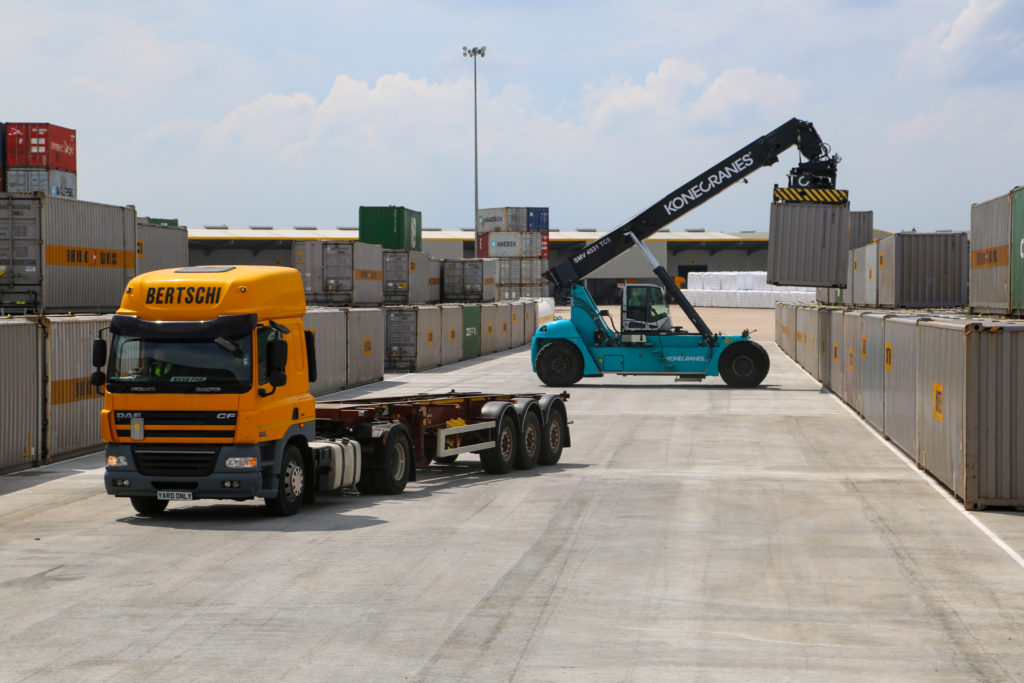Client: Seymour Civil Engineering
Location: Bertschi Teesside, Middlesbrough Road East, Middlesbrough
Project Summary:
The project involved the development of a new 22,000m2 concrete yard extension for the storage of containers. The site is located adjacent to the existing Bertschi yard on a brownfield site which had previously been used for storage of materials and empty containers.
Lynas Engineers was the Principal Designer for the Design and Build contract working closely with Seymour Civil Engineering to provide feasibility layout options; develop the detailed design; and advise during the construction phase.
The scheme included the design of a Roller Compacted Concrete yard and a lime and cement stabilised formation surface; we worked closely with heavy duty pavement design specialists and the paving contractor to develop a durable and cost-effective solution. The use of RCC and ground stabilisation removed a significant volume of material import and export and reduced vehicle movements during construction. Existing concrete foundations and sections of hardstanding were crushed to provide material for the pavement foundation. The yard was designed to tight tolerances to allow the safe stacking of containers whilst providing adequate surface water drainage. The drainage network included heavy duty slot drains to maximise upstream storage and was designed to attenuate the surface water from the new yard requiring the design of a 900m3 balancing pond and a pumping station to the existing outfall.


Challenges:
Sloping site with variable ground conditions and existing concrete foundations.
Need to match levels to existing yard to provide continuous surface. Significant loading from stacked containers and reachstackers.
Successes:
Working closely with the client and contractor at an early stage allowed the container layout to be maximised and meet operational requirements.
Provision of space for additional 1600 containers stacked five high. Reprofiling and stabilisation treatment of the existing material to provide a suitable formation.
The use of RCC removed the need for reinforcement; reduced joints; allowed early access for the client; and had significant environmental advantages.

